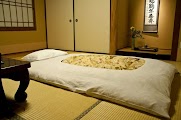At the altitude of 2,565 meters height above sea level, Doi Inthanon is the highest peak of Thailand, contains an amazing variety of natural resources, including beautiful seas of clouds, evergreen-tree forests coated with ferns, mosses, and orchids – a living bounty of natural beauty. It was declared a national park in 1972. Nowadays, it covers an area of 301,500 rai (102,600 acres). Its geographical features consist of high mountain ranges, which are parts of the Thanon Thong Chai Range locating in the northwestern part of the country.
Doi Inthanon National Park
 |
| Mea Ya Waterfall |
The geological structure consists of rock formations aging from the Cambian period. The general climate is cooler than the areas lower. The local weather conditions are influenced by the southwestern monsoon, which brings humidity and rain, while the northeastern monsoon from China delivers cool and arid condition to the area. Importantly, Doi Inthanon is a source of the River Ping, which has generates the spectacular Mae Ya and Wachirathan waterfall. The beauty of Doi Inthanon National Park can be viewed in any season. There are three seasons: the hot season in March – April; the rainy season in May-October, the cool season in November – January. Temperatures in the cool season are usually at 0-4 degrees Celsius, which produce ice flakes on the grass fields.
Mosses and Lichens (Doi Inthanon)
There are various types of forest and plant communities in Doi Inthanon National Park consisting of 6 types of forest: dry dipterocarp, dry dipterocarp intermingled with pines, pines intermingled with oaks, hill evergreen, mixed deciduous, semi-evergreen and abandoned cultivated area. In Doi Inthanon National Park, there are up to 1274 plant species, 37 species of which are newly discovered in Thailand and only on Doi Inthanon. Of all the plant species found on Doi Inthanon,
Living Together – Epiphytic ferns
There are nine hundred kinds of Rhododendron all over the world, of which ten have been found in Thailand. Three of the species: Rhododendron arboretum subsp delavayi or Kham Daeng, Rhododendron ludwigianum or Kham Khao and Rhododendron lyi or Ka Yom are endemic to Doi Inthanon. Orchids are the other major typical aspect of the flora of Doi Inthanon and there are more than 90 species of orchid such as the remarkable Paphiopedilum villosum and Pleione praecox, a rare orchid found during the raining season only. Besides, there are three kinds of ferns almost extinct from Thailand, including Polypodium garretti,Plagiogyria and Cheilanthes delicatula were re-discovered by botanists and naturalists. For the orchid and fern lover this is indeed paradise.
Doi Inthanon National Park has over 466 species of wild animals. The most interesting one is Crocodile Salamander. This is the only species of salamander found in Thailand and is limited in its distribution. It is found only in a few localities in the North, such as Doi Chiangdao, Doi Angkang and Doi Inthanon.
Elephant is one of the popularity animal in Doi Inthanon National Park
Highest water source in Thailand (Ang Ka, Chiang Mai)
 The Ang Ka Nature Study Trail located at the summit is a good start for most of the visitors. This 360 m wooden trail stretches over a swamp forest which takes about 35 minutes to walk. Ang Ka, which means crow’s pond in Thai, could be considered the highest natural water catchment in Thailand and the source of River Ping. It is classified as temperate evergreen forest and has a peat bog and pond in the middle. The general feature along the trail is similar to the swamp forest in the warm climate area. Along the rim of the swamps are mossy. The distinct kind is Sphagnum spp. The major flora is the red rhododendron. According to the cool climate, the forest features the density of the amazingly large old trees. Every trees trunk are fully covered with parasitic plants especially mosses and ferns creating a unique character to the forest. Some people then called it a “Coat-wearing Forest”.
The Ang Ka Nature Study Trail located at the summit is a good start for most of the visitors. This 360 m wooden trail stretches over a swamp forest which takes about 35 minutes to walk. Ang Ka, which means crow’s pond in Thai, could be considered the highest natural water catchment in Thailand and the source of River Ping. It is classified as temperate evergreen forest and has a peat bog and pond in the middle. The general feature along the trail is similar to the swamp forest in the warm climate area. Along the rim of the swamps are mossy. The distinct kind is Sphagnum spp. The major flora is the red rhododendron. According to the cool climate, the forest features the density of the amazingly large old trees. Every trees trunk are fully covered with parasitic plants especially mosses and ferns creating a unique character to the forest. Some people then called it a “Coat-wearing Forest”.
A Beautiful Rain Forest, Doi Inthanon
Written by,
Nong Chalida a/p Suwan
A13A0617

























